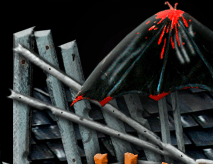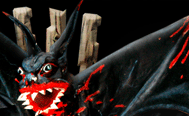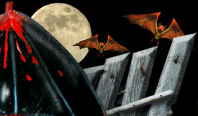The Haunted House track is made with 3/4" dual-channeled, square–shaped steel bar. The track is held in place to the concrete floor roughly every 12 inches with steel L-brackets welded to the track and bolted to the floor. Recently, additional brackets were added as extra reinforcement to help keep the track in place.
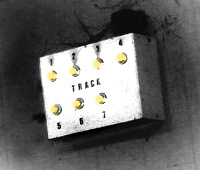
The track within the Haunted House is divided into 7 zones. Each zone is on its own circuit breaker. Normally, if more than three
cars are in a particular zone at any given time, the breaker will trip sounding an alarm out in the
lobby. With normal operation, and the 10 second intervals given between each lobby departure, it is impossible to have more than three cars in a given zone unless the car malfunctions. If a car were to malfunction in say zone 2 (Sawmill) and come to a stop, the next car will be stopped by the first car, and the third will be stopped by the second—and so on a so forth. After the forth car is stopped by the line of cars, it will inevitably trip the breaker and cause the ride to be shut down.
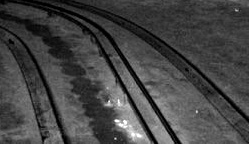
The most troubled areas in the Haunted House are the Knit wit area and the up-hill with the Falling beam. The falling beam is particularly tricky because of the strain put on the vessel while climbing this hill. The box for the breaker alert system is mounted over the entrance door in the lobby. When a breaker is tripped, the light of the corresponding breaker will go out and an alarm will sound.
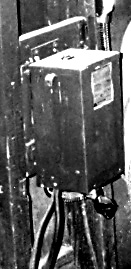
Although the breaker system may seem straight-forward, it can become tricky. There are some zones that actually skip around to different parts of the ride. An example of this would be zone 1, which includes the first room, second room and then jumps over to the down-hill. There is no real ryhm or reason as to why this is, but it has to do with where the track sections are located. On the other side of room 2 (crooked timbers), the downhill resides. So, although both sections of track are on separate sides of the ride, they are practically side-by-side. Each zone in the Haunted House is accompanied by a control box which houses a fuse and enables the track to be split into separate circuits. The box provides current to each portion of the track and has the potential to blow if too much load is put on it.
The braking system within the ride is make-shift. It consists of two components; a U-shaped bent piece of steel which acts as a guide for the rubber tires so the car does not fishtail, and blocks of wood built up underneath the track. The wood under the track slows the car as the Unit scraps the wood and causes friction. At times, you can hear the screeching of the metal rubbing against the wood as it attempts to slow the car.
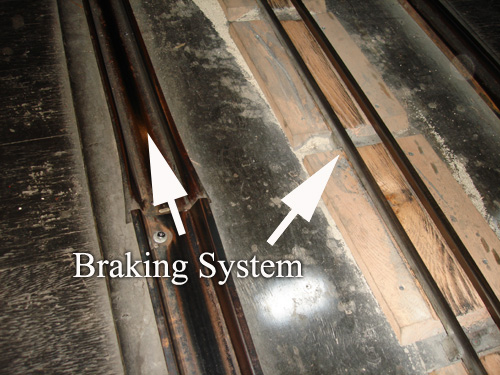
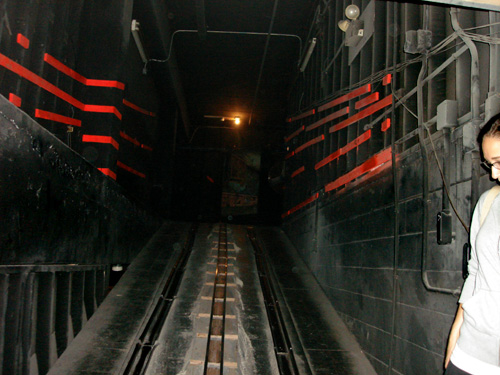
This braking system can be found in several locations throughout the ride; after the upside-down room, the down-hill, and the Cuckoo Clock. The management monitors these wood blocks often so they know when to replace them. It is important to note that this primitive braking system is crucial. A few years back, the management found out just how important this system was when they were testing different methods and watched a car plummet down the hill and break into a million pieces at the at the banister near the bottom of the hill.
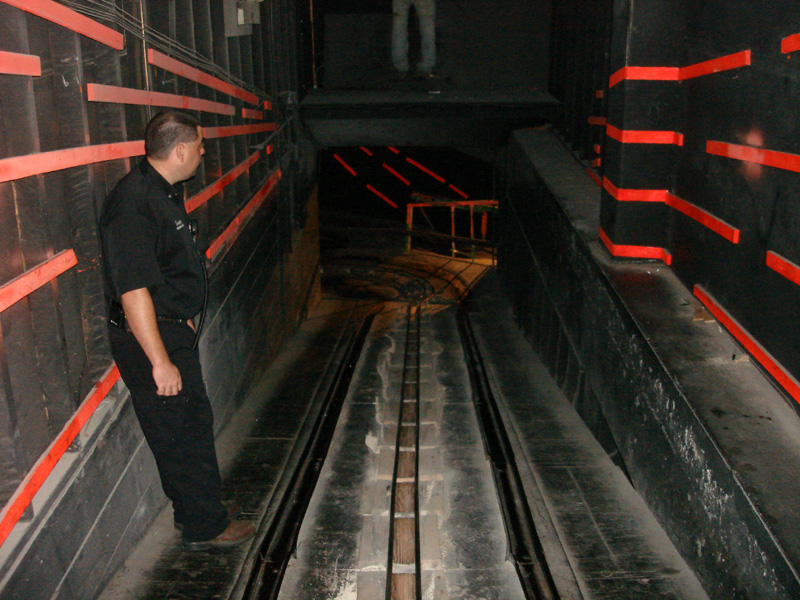
Although the Lobby is considered Zone 6, it is actually divided into four sections to allow the ride operator to have total control. The 4 sections are controlled by a junction box which the operator usually holds in his/her lap. It consists of 4 buttons which control each of the 4 sections.
As your car exits the ride, it is gliding on live current until it comes in contact with Zone 6, Section 4. This section is the unloading area. It then will encounter Zone 6, Section 3 as it rounds the bend on the far right. Zone 6, Section 2 is next in queue, which is along the front fence around to the loading area. Then, Zone 6, Section 1 is the loading area which will take the car through the entrance door to until it reaches live current. Please refer to diagram and table below:
|
SECTION |
QUEUE |
LIVE |
Live current takes you out of the ride until you reach section 4 of zone 6. |
1 |
Will take your car from the loading area into the ride until the car hits live current. |
2 | Front lobby fence to the loading area |
3 | From section 4, around the bend, to the front fence |
4 | Unloading area to around the bend where it will touch section 3 |
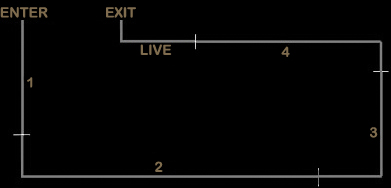
Undoubtedly, the Haunted House cars will require maintenance requiring the cars to be lifted upright to allow access to the underbody of the vessel. But, how do they do this?
In the first room immediately following the second set of double doors, also referred to as light barriers, a section of the track channel is cut out allowing the removal of the cars. There is a small section of track that is removable by unscrewing several nuts which allows workers to pull the car forward, being sure the Unit is lined up correctly, at which time they can remove the car altogether.
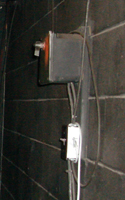
In order for a person to be able to touch the track, which is carrying live 24 volt AC current, the track must be turned off using a switch box located on the right wall of the first room. This box will only cut current to the first room, while the track cutoff switch in the lobby will turn off current to the entire ride in the time of trouble.
Being that the cars cannot role backwards thanks to their anti-rollbacks, the cars must be pushed by workers if they happen to stop in order to get them to the first room to be removed from the track. In other words, if a car were to stop in the second room, it would have to be pushed throughout the entire ride even though it is only feet away from the removable section of the track. Speaking from personal experience, pushing a car up the steep incline of the mine shaft is absolutely exhausting, especially if only one crew member is pushing. But while the first half of the ride is built up on platforms, making it more difficult to push the heavy beast, the second half of the ride is basically solid concrete, which makes it much easier to push a car through the ride.

Shown above: A section of track in the lobby
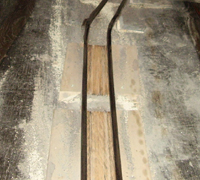
In the picture to the left, you will notice a white powder scattered on the floor near the track. Initially, one might think that its dirt, but think again. For the past several years, Scott has been trying to implement new systems for the downhill in terms of car braking. With a lot of trial and error, he has finally hit the jack pot!
During several different times of the year, the wooden blocks, which are crucial in slowing the cars during their decent, begin to sweat and become moistened which will inevitably inhibit the blocks from being affective when slowing the cars. Friction is the key element used to slow the vessels: when the Unit scraps the dry wood, the car is immediately held back.
The white powder seen in the picture is a substance called Oil Dry (or kitty litter). If the blocks become moist due to sweating, Scott will sprinkle the oil dry onto the blocks which will immediately dry them out. Once the blocks are dried out, they once again become effective.
